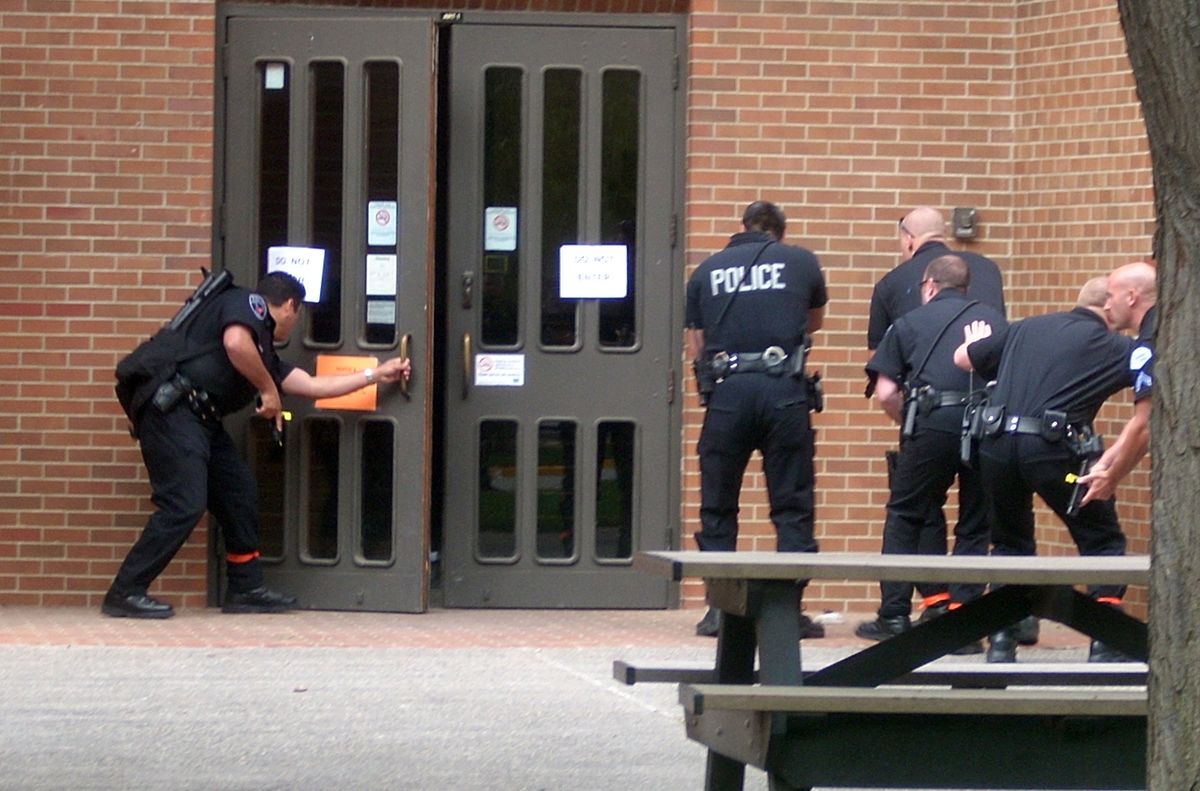EWU prepares for emergency
Departments work together during mock hostage situation

CHENEY – More than 100 volunteers, law enforcement officers, firefighters and first responders staged a mock hostage situation last week at Eastern Washington University.
The April 2007 shooting at Virginia Tech in which a lone gunman killed 32 people and wounded 18 others before killing himself, prompted EWU to boost its campus security and emergency planning.
EWU now uses the E2 Alert System, which sends text messages to students’ and their parents’ cell phones during emergencies. So far the messaging system has been used during January’s big snowstorm and during two bomb threats at the school.
In addition, students can find information about what to do if there is a shooter on campus on the school’s Web site, and freshmen must view a training video about what to do.
“We want to prepare our kids if they are ever involved in a situation,” said Tim Walters, EWU Police Department chief.
The point of the mock hostage exercise was to make sure that if ever is a shooter at EWU, all of the responding agencies will be prepared and know what to expect from each other.
“It’s good for us to be able to get together with our neighboring entities,” Walters said.
At the training exercise, the art building was shut down and volunteers inside pretended to be hostages. There were two suspects and one of them strapped the hostages with explosives and threatened to blow them up if his demands weren’t met.
The police used paint-filled bullets that are much like paintballs, but can be loaded into their service weapons.
“They wash off but they can also leave welts,” said EWU Detective Quincy Burns.
The explosives made a lot of noise, but weren’t actually bombs that threw any sort of projectile.
To make sure that everyone was safe, responders were patted down for weapons, metal detector wands were swept over each officer and every gun that was brought in was double-checked to make sure it was loaded with the paint-filled bullets and not live ammunition. After each officer was checked, an orange ribbon was tied around his ankles to let everyone know he was safe.
The EWU and Cheney police officers were the first to enter the building. They were followed by the Airway Heights police.
The police scanners squawked out what was happening inside.
“A bomb exploded in the front lobby and we’re down,” said one of the voices on the scanner. “I also have two other victims down in the lobby.”
Officers helped victims of the fake attack out of the building and called out to the Cheney Fire Department the kinds of wounds each victim had. The volunteer victims were given pieces of paper that listed their injuries.
Victims with injuries were classified with tags depending on the severity of their wounds. They were then taken far away from the building to be triaged or taken by ambulance for treatment.
Because of the safety checks and security measures, many of the responding units had to slow down quite a bit. When each group arrived at the scene, they hopped out of their vehicles and started running toward the building, only to be stopped by the security checkpoint.
SWAT and the Sheriff’s Department soon arrived on the scene, hostage negotiators brought in a phone to talk to the suspects.
The bomb squad even brought out its robot to get into the building and take possession of the bomb.
This was the first time the campus has launched a large-scale practice emergency, but Walters said that it won’t be the last.
“This is something that we intend to do every year,” he said.
Burns said that the training was very important to the different departments.
“Our worst has to be better than their best,” he said, regarding the responders at Virginia Tech. “Unfortunately, in this day and time that we live in, we are going to need more and more of this.”